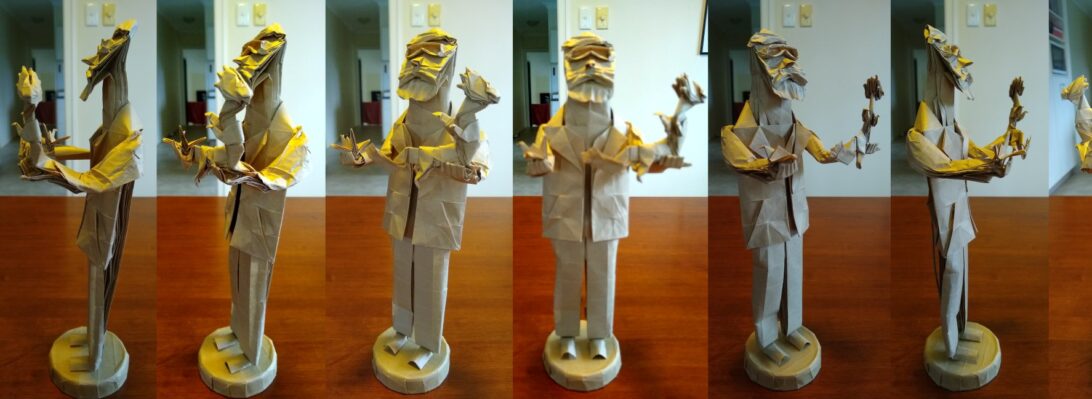I was invited to a “fold along” on Fakebook live by Fergus Currie, a multi-talented origamist with a penchant for geometric solids, I was free, and thought “why not”:

Fergus demonstrated the folding sequences for 2 models taken from M.C. Escher’s “Waterfall” Lithograph, this one is the 1st stellation of the Rhombic dodecahedron (Escher’s Solid) – a remarkable 12-pointed solid with each unit being a slightly deformed pyramid.

We started with unit folding, then moved on to construction techniques – a fun modular, in Fergus’ style of folding the entire vertex as a single unit, based on a template to geometrically construct the correct angles – neat stuff.
Continue reading







